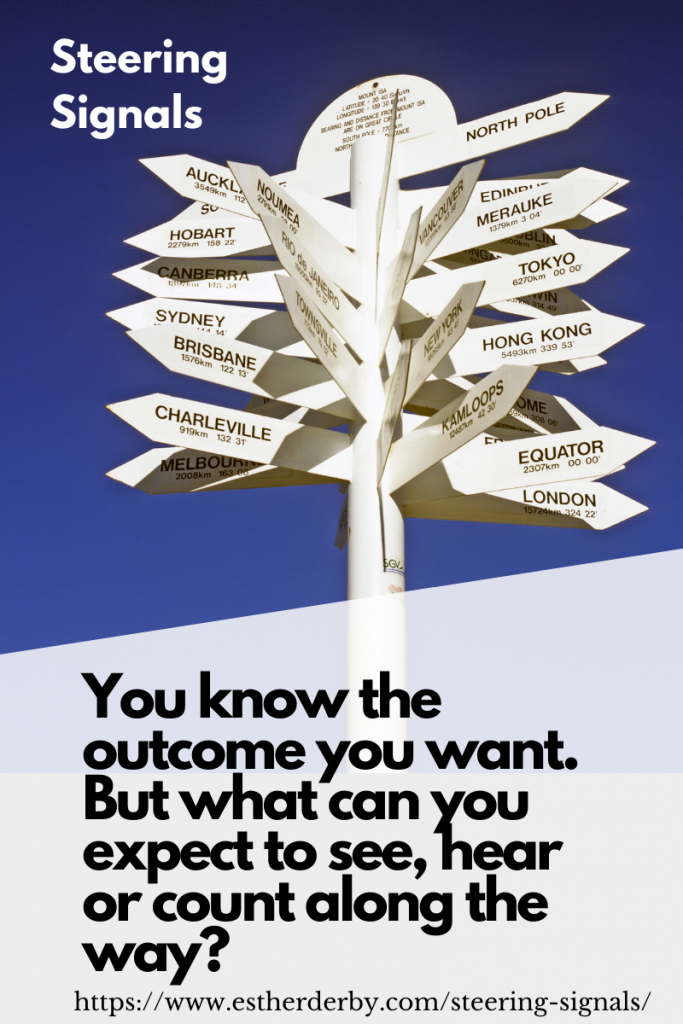When making a change or fixing a problem, we consider the outcome we want to achieve—what will be different. People usually consider how to measure those outcomes. Will cycle time go down? Retention go up? Customer satisfaction improve? Clicks go through the roof? But how do they know they are headed in the right direction? Steering signals.
With some of these changes, you’ll know quickly whether your action has an effect—with clicks, for example. Cycle time, retention, and customer satisfaction may take longer to move—months or even a year. So do you wait until the outcome measure moves? You could, but you’d miss the opportunity for course corrections. You might discover that the solution you’ve chosen doesn’t move the bar at all. You need early information that you’re headed in the right direction—or the wrong one.
Subtle Signs to Help You Steer Along the Way
You know the outcome you want. But what can you expect to see, hear or count along the way?
Steering signals may be the sort of thing companies typically measure. But signals can be subtle and tiny— hard to measure yet observable or detectable—if you pay attention. These cues provide information and motivation.
Think cues, not Measures with a capital M. When you lose weight, you may track your weight with a scale. That’s a measurement. You may also notice your clothes fit better (or less well), or pull ups at the gym feel just a tiny bit easier—signaling a difference. Probably not part of a Measurement program, but very useful indicators of change. And you may notice them before you see significant progress on the outcome measure.
An Example
Say, for example, I’m trying to reduce cycle time. First, I look at factors that contribute to long cycle times. I Analyze which I can influence and where I’m are likely to have significant impact. Then, I track whether those factors are moving in the expected direction. Some factors are measurable, like work in progress (WIP), number of approvals, time to receive approvals, other wait times, fixing work vs feature work. If those measures are moving in a desirable direction, I can have some assurance that my interventions will eventually reduce cycle time.
But there may be additional signals. I might notice that team members are more aware of their customers. That might not seem like a direct contributor to cycle time. However, greater understanding of the customer could contribute to better local decisions, more context-sensitive testing, less inclination to get caught up in recreational technical yak shaving.
I might try to detect changes in how people feel about rigorous technical practices. Not so easy to measure (not impossible, but probably costly and intrusive). But if I pay attention, I can detect changes. I may notice comments or questions, or when a new practice becomes “just the way we do things.” If people struggle with a new practice, it might be a signal that some pre-condition is missing or they need mentoring. And that will help me make small adjustments to increase the likelihood we’ll achieve the desired outcome.
What changes are you making? What outcomes are you looking for? What signals will help you steer?



